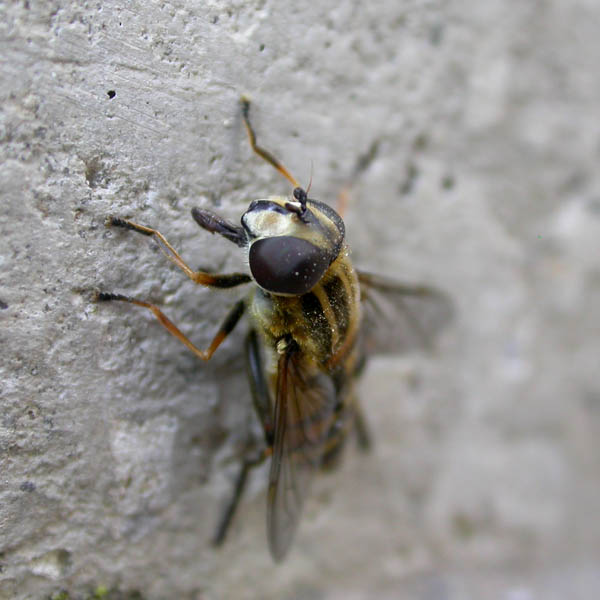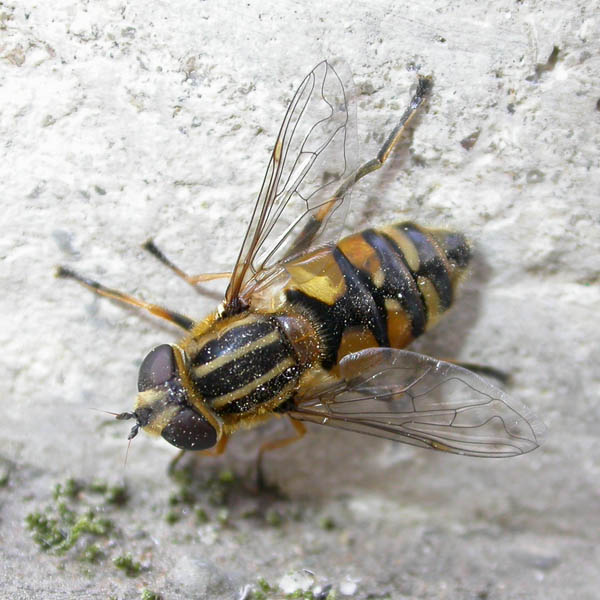Diptera.info :: Family forums :: Syrphidae
Who is here? 1 guest(s)
|
Helophilus pendulus, Syrphidae, Hungary, April 2007
|
|
| Xespok |
Posted on 17-04-2007 19:24
|
|
Member Location: Debrecen, Hungary Posts: 5551 Joined: 02.03.05 |
Simiar to Helophilus sp, but is this a different genus?
Xespok attached the following image:  [77.33Kb] Edited by Xespok on 17-04-2007 20:02 Gabor Keresztes Japan Wildlife Gallery Carpathian Basin Wildlife Gallery |
| Xespok |
Posted on 17-04-2007 19:25
|
|
Member Location: Debrecen, Hungary Posts: 5551 Joined: 02.03.05 |
Another view.
Xespok attached the following image:  [101.65Kb] Gabor Keresztes Japan Wildlife Gallery Carpathian Basin Wildlife Gallery |
| Paul Beuk |
Posted on 17-04-2007 19:26
|
|
Super Administrator Location: Netherlands Posts: 19403 Joined: 11.05.04 |
Why not simply pendulus?
Paul - - - - Paul Beuk on https://diptera.info |
| Xespok |
Posted on 17-04-2007 20:01
|
|
Member Location: Debrecen, Hungary Posts: 5551 Joined: 02.03.05 |
Well, mostly because I had never seen a female pendulus here. Trivittatus is so much more dominant.
Gabor Keresztes Japan Wildlife Gallery Carpathian Basin Wildlife Gallery |
| Kahis |
Posted on 17-04-2007 20:16
|
|
Member Location: Helsinki, Finland Posts: 1999 Joined: 02.09.04 |
Really? Up here in Finland pendulus is very, very common and it also looks like a migrant, so I would except to find females anywhere, anytime.
Kahis |
| Stephane Lebrun |
Posted on 17-04-2007 20:26
|
|
Member Location: Le Havre, France Posts: 8248 Joined: 03.03.07 |
Hello, the black facial stripe rule out H. trivittatus. The almost completely black hind legs rule out H. pendulus. My guess is Helophilus affinis female because the hind margin of T3 and T4 are only weakly yellowed, without distinct yellow band. The fore tarsi and apical part of fore tibia are strongly darkened, but seem yellow below. If I am mistaken, it is with H. hybridus wich as broader patterns on tergites and fore tarsi/apical part of tibia completely dark, even below. Regards. Stephane. |
|
|
|
| Dieter |
Posted on 17-04-2007 23:38
|
|
Member Location: Munich, Germany Posts: 114 Joined: 15.04.07 |
I think Stephane is right. And the hind tibia is much more red in pendulus. H. hybridus is very improbable due to the comparatively small size of the yellow spots on 2nd tergite. Regards, Dieter |
|
|
|
| Xespok |
Posted on 18-04-2007 18:48
|
|
Member Location: Debrecen, Hungary Posts: 5551 Joined: 02.03.05 |
This would be a new record for Hungary. Only trivittatus, pendulus and hybrydus are present on the Hungarian checklist. I hope I have this specimen. I have specimens for around 60% of the flies that I photogralphed this year. The others flew off. Trivittatus is more common in Hungary, and I tend to see pendulus only in early spring. Actually I have a photo of a female, so my previous statement about never having seen a female was wrong. I also do not know how reliable the difference is, but I feel that trivittatus tends to be yellowish, while pendulus is more orangish. Edited by Xespok on 18-04-2007 18:52 Gabor Keresztes Japan Wildlife Gallery Carpathian Basin Wildlife Gallery |
| Stephane Lebrun |
Posted on 18-04-2007 21:29
|
|
Member Location: Le Havre, France Posts: 8248 Joined: 03.03.07 |
Xespok wrote: I also do not know how reliable the difference is, but I feel that trivittatus tends to be yellowish, while pendulus is more orangish. Among Helophilus species, H. trivittatus is unmistakable by its large size (14-17 mm) and by the yellow stripe on the face, that other Helophilus never have. The lighter colours of H. trivittatus are also a clue indeed. Regards. Stephane. |
|
|
|
| Jump to Forum: |













